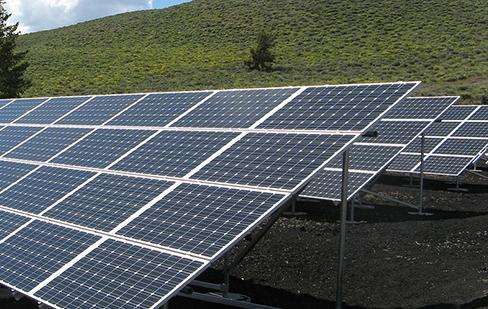Cooling water from nuclear power plants is recycled.
The cooling fluid of the primary circuit is generally called heat transfer or moderator (neutron moderator). This is light water under pressure (ordinary water), since it is in contact with the reactor core. will be radioactive; the cooling water of the secondary circuit has the same function as an ordinary thermal power plant. It is heated and transformed into steam to produce electricity, and there is no radioactivity.
The third loop generally uses filtered water from the Haihe River. After cooling the secondary loop, it is then discharged towards the coast or along the river. The discharged water does not contain radioactivity, but due to the release of. excess heat in the secondary loop, there is therefore thermal pollution in relation to the emission medium.
Under normal circumstances, when hot waterenters the cooling tower to be cooled, only a small amount of steam comes out (white smoke), and most of the water can and will be recycled after being cooled. is not radioactive.
The principle of nuclear power plants:
In a pressurized water reactor, a large amount of heat is generated by the auto chain fission reaction -maintenance of Nuclear fuel atoms and coolant (also called heat transfer body) bring heat from the reactor into the steam generator and transfer it to its working fluid, water.
Next, the main circulation pump returns the coolant to the reactor for recycling, thus forming a loop, called the first loop. This process is the energy conversion process in which nuclear fission energy is converted into thermal energy.
The working fluid ofThe secondary side outside the U-shaped tube of the steam generator is heated and evaporates to form steam. Steam enters the steam turbine and expands to do work, converting the thermal energy released by it. the enthalpy drop of the steam in the mechanical energy of the rotation of the steam turbine rotor. This process is called energy conversion process in which thermal energy is converted into mechanical energy.
Reference for the above content: Baidu Encyclopedia - Nuclear Power Plant
What is cross flow cooling water for thermal power plants?
The function of the cooling tower in a thermal power plant is to supply cooling water of a certain temperature to the condenser to condense the exhaust steam from the low pressure cylinder of the steam turbine, so that the steam turbine can operate safelyand economical under a certain exhaust vapor pressure. The functions of cooling towers in thermal power plants are as follows:
The higher the cooling capacity of the cooling tower, the lower the temperature of the cooling water supplied to the condenser after circulating water passes through the cooling system. tower, and the lower the cooling water temperature, it will also improve the condenser vacuum, which ultimately reduces the coal consumption level of the power plant and improves the economical operation of the unit.
The choice of cooling tower is very important. There are many shapes of cooling towers and their structures are also very complex. According to the ventilation method, there are natural ventilation cooling towers and mechanical ventilation cooling towers according to the ventilation method.contact between hot water and air, there are wet cooling towers (open type), dry cooling towers (closed type) and dry and wet; Types (mixed). Classified according to the flow direction of hot water and air, there are counter-flow cooling towers and cross-flow cooling towers.
Thermal power plants generally use moist natural ventilation cooling towers or moist mechanical ventilation cooling towers. Moist natural ventilation cooling tower is a cooling tower that uses natural wind or heat to generate airflow. Its advantages are simple structure and low operating cost. It is inexpensive and easy to maintain. Its disadvantages are its large size, its low efficiency and its great impact on the environment. The wet mechanical ventilation cooling tower is a cooling towerement that uses fans to force airflow. Its advantages are small size, high efficiency and it is not affected by the environment. Its disadvantages are complex structure, high operating costs and high noise.
Boiler return water, ventilation and cooling.
A thermal power plant, called a thermal power plant, is a factory that uses coal, oil and natural gas as fuel to produce electrical energy. Its basic production process is as follows: fuel is burned in the boiler. and the heated water is converted into steam, and the chemical composition of the fuel is converted into steam, the energy is converted into thermal energy, the pressure of the steam drives the rotation of the steam turbine, the thermal energy is converted into mechanical energy, then the heated water is transformed into steam. The steam turbine drives the rotation of the generator, converting mechanical energy into electrical energy.














